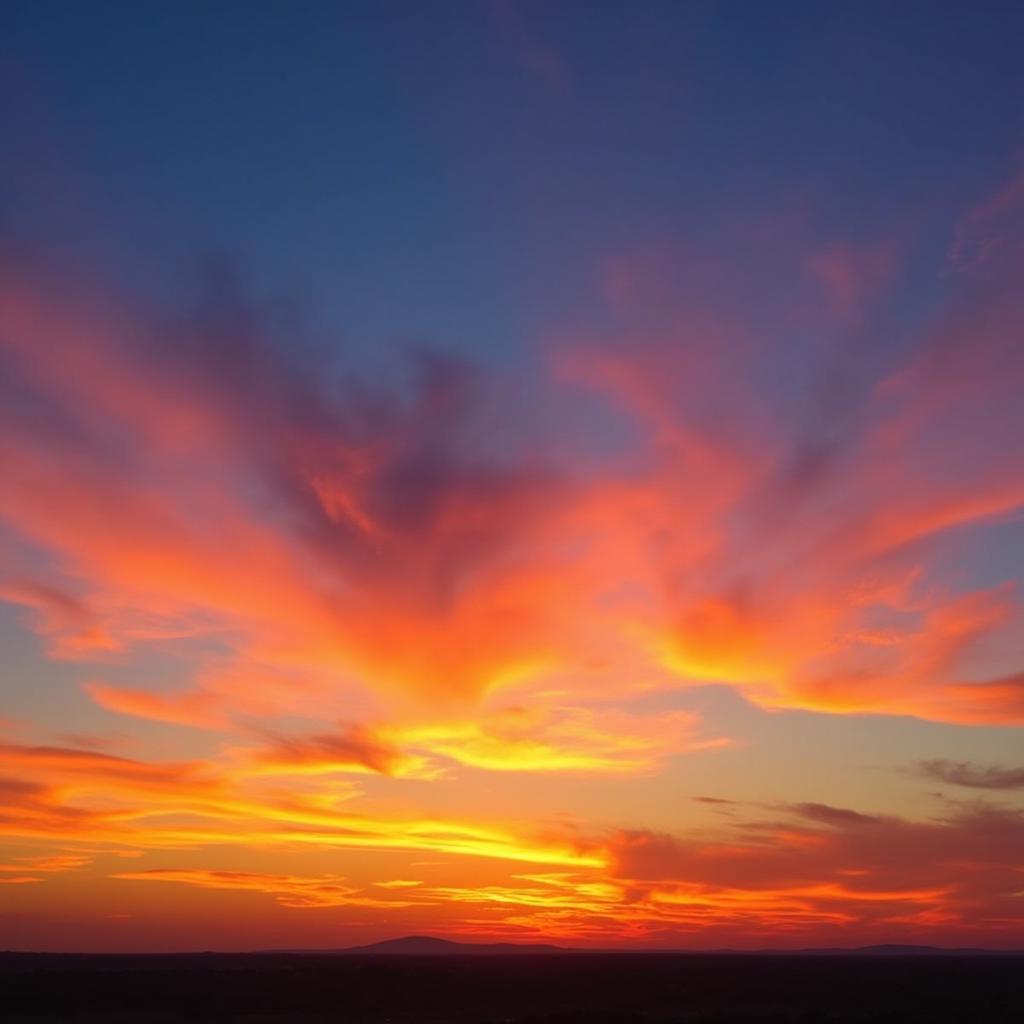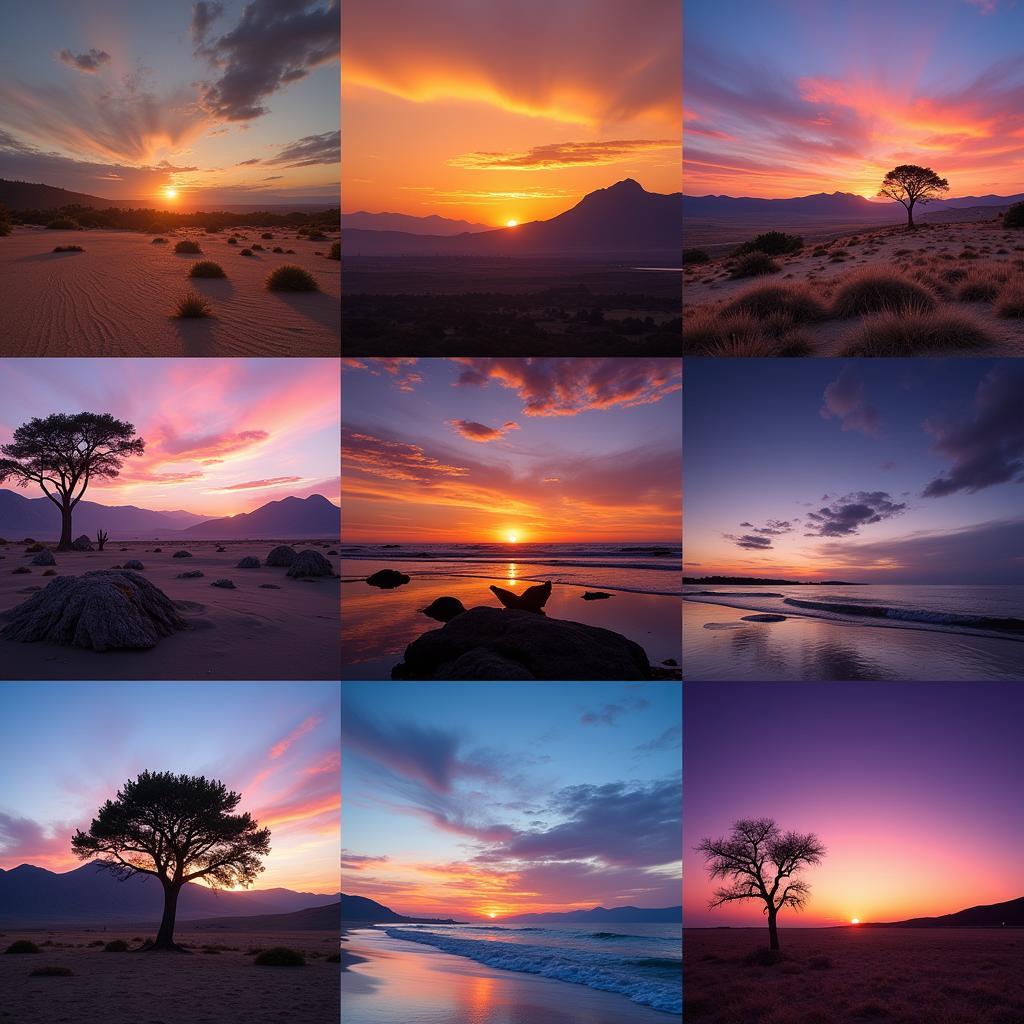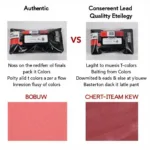Dusk, that magical time between day and night, captivates us with its ever-shifting palette of colors. But What Color Is Dusk, exactly? It’s a complex question with a fascinating answer that delves into the science of light and our perception of color.
Unraveling the Hues of Dusk
Dusk doesn’t have one single, definitive color. Instead, it’s a beautiful gradient that transitions through various shades, influenced by atmospheric conditions, geographic location, and the time of year. The most commonly observed colors during dusk range from soft yellows and oranges to vibrant reds, purples, and deep blues. These breathtaking displays result from the scattering of sunlight as it passes through the Earth’s atmosphere.
As the sun dips below the horizon, its light travels through a greater portion of the atmosphere. This longer path causes shorter wavelengths of light, like blue and violet, to scatter away, leaving the longer wavelengths of red, orange, and yellow to dominate the sky. This phenomenon is similar to what color is twilight, where the sky displays a range of colors during the transition between day and night.
 Dusk Colors Explained
Dusk Colors Explained
The Science Behind the Sunset Spectacle
The intensity and hues of dusk are greatly influenced by atmospheric particles like dust, water vapor, and pollutants. These particles can further scatter and absorb light, creating a wider range of colors and intensifying the display. For example, after a volcanic eruption, sunsets can appear exceptionally vivid due to the increased presence of airborne particles.
The angle of the sun also plays a significant role. As the sun descends further below the horizon, the light passes through even more atmosphere, leading to deeper reds and purples. To better understand the relationship between time and the changing colors of the sky, consider exploring resources like what time is dusk in colorado.
Why is Dusk Different Every Day?
Every dusk is a unique masterpiece. The specific mix of atmospheric conditions, cloud cover, and the presence of pollutants contributes to the variations in color we observe. This makes dusk a dynamic and ever-changing spectacle.
 Varying Dusk Colors Across Different Locations
Varying Dusk Colors Across Different Locations
Capturing the Magic of Dusk in Your Home
As color experts at Color Box Hanoi, we understand the profound impact that color can have on our mood and well-being. Bringing the serene and inspiring hues of dusk into your home can create a calming and inviting atmosphere. Think about incorporating warm, earthy tones like terracotta, ochre, and burnt orange into your interior design. These colors can evoke a sense of tranquility and warmth, reminiscent of the beautiful sunsets we admire. For those interested in understanding how animals perceive these colors, you might find it intriguing to learn what colors do deer see.
“Dusk offers a remarkable spectrum of colors, from warm yellows to cool blues. By understanding these natural transitions, we can create interior spaces that reflect the beauty and tranquility of this special time of day,” says renowned color psychologist, Dr. Anya Sharma.
Creating a Dusk-Inspired Palette
When creating a dusk-inspired color palette, consider layering different shades and textures to achieve depth and complexity. You can also incorporate accents of deeper blues and purples to create a sense of contrast and visual interest. This concept shares some similarities with what color does brown and pink make, where the combination of different hues creates a unique and appealing outcome.
Conclusion
Dusk is not simply one color, but a mesmerizing symphony of hues created by the interaction of sunlight and the Earth’s atmosphere. By understanding the science behind these beautiful displays, we can appreciate the unique and ever-changing nature of dusk even more. At Color Box Hanoi, we can help you capture the magic of dusk and transform your living spaces into havens of tranquility and inspiration.
FAQ
-
What time does dusk occur? Dusk occurs after sunset and before nightfall.
-
What is the difference between dusk and twilight? Twilight refers to the period before sunrise and after sunset, while dusk specifically refers to the period after sunset.
-
Why is the sky red during dusk? The red color is due to the scattering of sunlight as it passes through a thicker layer of the atmosphere.
-
Does dusk look the same everywhere in the world? No, atmospheric conditions and location influence the specific colors seen during dusk.
-
Can I recreate the colors of dusk in my home? Yes, by carefully selecting paint colors and incorporating warm, earthy tones, you can create a dusk-inspired atmosphere.
-
What are some other natural phenomena that affect color perception? what color do deer see is an example of how different species perceive color differently.
-
Where can I find more information about color theory and application? For further exploration, you can explore the topic of what color is twilight.
Need help choosing the perfect dusk-inspired palette for your home? Contact us at 0373298888, email us at [email protected], or visit us at 86 Cầu Giấy, Hanoi. Our 24/7 customer service team is ready to assist you.

